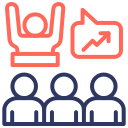Communication Boundaries with Family or Roommates
Set quiet hours, define emergency exceptions, and post a simple plan on the fridge. A quick Sunday check-in aligns schedules. Ask for input so the plan feels fair. What agreement changed your day most? Share it to help other households adapt.
Communication Boundaries with Family or Roommates
Use a door sign, colored light, or headset as a mutual cue that you’re in deep work mode. Pair the cue with a promise of availability after. Invite family to help choose the signal, then tell us which cue worked best for you.
Communication Boundaries with Family or Roommates
Life changes. When routines break, revisit agreements without blame. Propose a trial tweak, review results, and iterate. This keeps goodwill and focus intact. Comment with a boundary you renegotiated successfully so others can learn from your script.
Communication Boundaries with Family or Roommates
Lorem ipsum dolor sit amet, consectetur adipiscing elit. Ut elit tellus, luctus nec ullamcorper mattis, pulvinar dapibus leo.








